Captains Blog
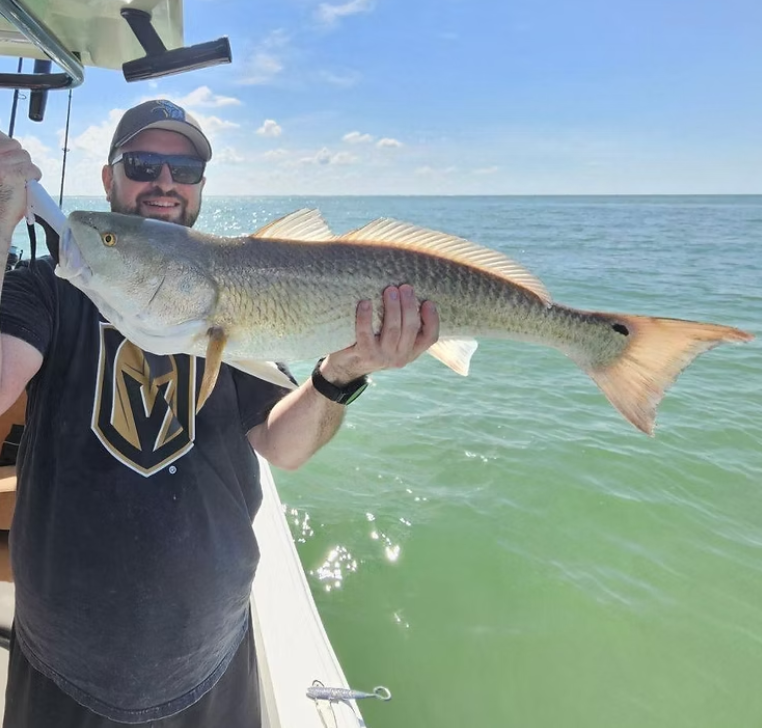
September 26, 2025
As the sun casts its warm glow over the tranquil waters of Pine Island Sound, anglers are gearing up for an unforgettable experience. The buzz around the fishing community is undeniable—Redfish are making their grand entrance and are here in impressive numbers! From the southern shores of Sanibel Island to the northern reaches of Captiva Island, enthusiasts are enthusiastically reeling in these prized catches. Venturing into the heart of the action, I recently found myself amidst the excitement, exploring the Pineland area of Pine Island and the picturesque southern islands of Matlacha. What awaited me was nothing short of spectacular. The waters teemed with Redfish, their shimmering scales glistening under the sunlight, beckoning me to join in the chase. Equipped with my reliable gear and a sense of anticipation, I embarked on a quest to conquer these elusive beauties. And conquer them I did! The The resistance of the line and the gratification of landing a prized upper-slot Redfish—it was a thrill beyond compare, a testament to the rewarding nature of fishing in Pine Island Sound, the exhilaration of the chase, What's the secret to success, you might wonder? Well, it's all about the bait. In these bountiful waters, various baits have proven irresistible to the Redfish. Pins, whitebait, tread fins, and shrimp offer unique allure, drawing the Redfish in with tantalizing temptation. But the adventure doesn't end with the Redfish. No, there's a whole world of excitement waiting along the shores of Fort Myers and Cape Coral. Snook, those cunning predators of the mangroves, are out in full force, offering anglers another thrilling challenge. And let me assure you, the action is intense! As the high tides of the later afternoon roll in, the excitement peaks, setting hearts racing and reels spinning. Pine Island Sound truly is a haven for a variety of fishing experiences, each one more exhilarating than the last. The rewards are plentiful for those fortunate enough to partake in this angler's paradise. Whether you're a seasoned pro or a novice angler, there's something magical about the thrill of the chase, the beauty of the catch, and the camaraderie shared amongst fellow enthusiasts. It's not just about the fish, it's about the shared passion and the friendships. that are formed on these shores So, if you are yearning for adventure and craving the thrill of the catch, look no further than Pine Island Sound. With Redfish abound and Snook aplenty, the possibilities are endless, and the memories last a lifetime.
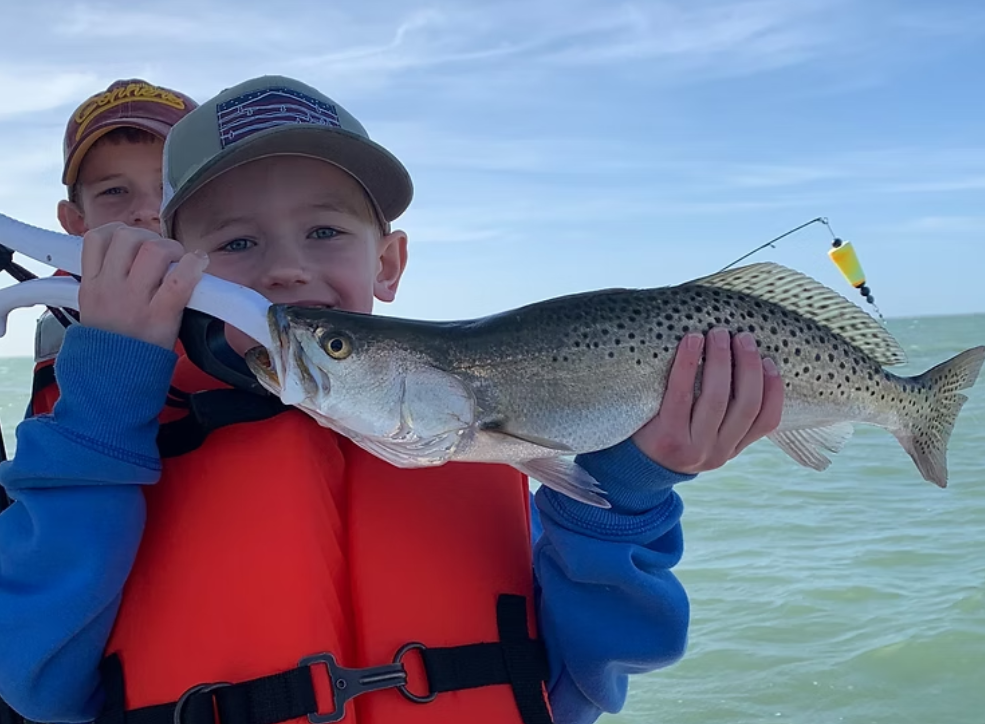
September 26, 2025
Nestled along the picturesque Gulf Coast of Florida, Sanibel Island is renowned for its stunning beaches, abundant wildlife, and world-class fishing opportunities. Sanibel Flats is a haven for seasoned anglers and novices among the many angling hotspots that dot its coastline. In this blog post, we'll delve into the allure of fishing around Sanibel Flats, exploring its diverse marine ecosystem and the thrilling experiences it offers to fishing enthusiasts. The Beauty of Sanibel Flats: Sanibel Flats, a vast expanse of shallow water flats, mangrove islands, and winding channels, stretches along the southern shoreline of Sanibel Island and extends into the surrounding waters. This unique ecosystem is teeming with life, providing the perfect habitat for various fish species. The shallow depths of Sanibel Flats make it an ideal breeding ground and feeding area for many prized game fish, including tarpon, snook, redfish, trout, and permit. Abundant food sources such as shrimp, crabs, and small baitfish attract these species to the flats, creating an angler's paradise. Fishing Techniques: Fishing around Sanibel Flats offers anglers many techniques to target their desired species. One popular method is sight fishing, where anglers stand on the bow of a shallow-draft skiff or flats boat and visually spot fish cruising the clear waters. This requires stealth, patience, and precise casting to present baits or lures effectively to the targeted fish. Another effective technique is fly fishing, which has gained popularity among anglers seeking a more challenging and rewarding experience. The shallow depths and clear waters of Sanibel Flats provide the perfect conditions for fly anglers to stalk and tempt wary fish with meticulously tied flies. Light spinning or baitcasting gear paired with live bait or artificial lures can produce excellent results for those preferring conventional tackle. Drifting along the edges of the flats or casting into shallow sandy potholes often yields strikes from various species. Best Times to Fish: While fishing around Sanibel Flats is productive year-round, certain seasons offer optimal conditions for targeting specific species. For example, the summer months are prime time for pursuing tarpon as they migrate along the coast for food and warmer waters. Spring and fall are excellent seasons for targeting snook, redfish, and trout as they become more active in the shallows. Tides also play a crucial role in the success of fishing around Sanibel Flats. Many anglers prefer to fish during incoming or outgoing tides when water movement stirs up prey and triggers feeding behavior among game fish. Understanding the tides and their effect on fish movement is critical to maximizing your chances of success on the flats. Conservation and Responsible Fishing: As with any natural resource, responsible angling practices are essential to preserving the health and sustainability of the fishery around Sanibel Flats. Catch-and-release fishing is encouraged, especially for sensitive species like tarpon, snook, and redfish, to ensure their populations remain robust for future generations. Additionally, anglers should familiarize themselves with local fishing regulations and adhere to size and bag limits to help maintain a healthy balance within the ecosystem. Respect for the environment, wildlife, and fellow anglers is fundamental to ensuring the long-term viability of fishing around Sanibel Flats. Conclusion: Fishing around Sanibel Flats offers a captivating blend of natural beauty, thrilling angling opportunities, and the chance to connect with the rich marine heritage of the Gulf Coast. Whether you're a seasoned angler or a novice enthusiast, exploring these shallow waters will leave you with unforgettable memories and a deep appreciation for the wonders of the sea. So grab your tackle, set sail for Sanibel Island, and immerse yourself in the excitement of fishing around the legendary Sanibel Flats.
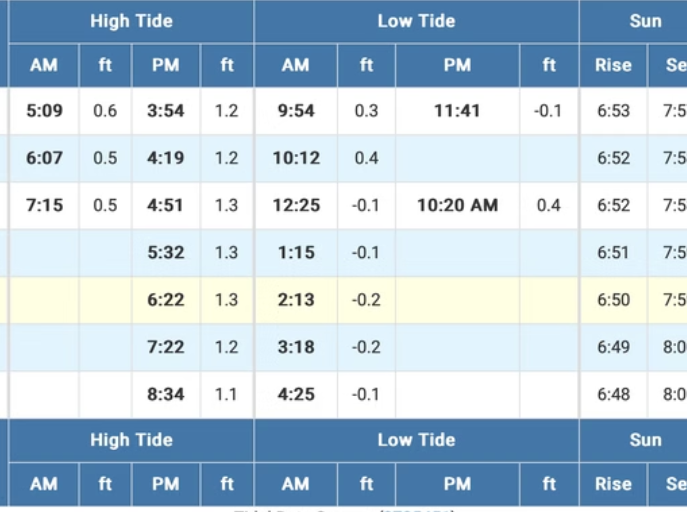
September 26, 2025
Like many other coastal regions, reading tide charts in Southwest Florida is essential for various activities such as boating, fishing, and beachcombing. Understanding tide charts allows you to plan your activities around the changing tide levels. Here's how to read tide charts in Southwest Florida: Obtain a Tide Chart: For tide charts specific to your location in Southwest Florida, visit a local marina, coastal information center, or the National Oceanic and Atmospheric Administration (NOAA) website. Online sources and mobile apps often provide up-to-date tide information. Search for a reliable tide chart source or app and set your location to a Southwest Florida location. Identify Your Location: Find the location or tide station closest to where you plan to be, as tide levels vary along the coast. Understand the Key Elements: Tide Chart: The tide chart typically shows predictions for a specific location over a set period, usually a month. It may include data for high, low, and tide heights. Interpret the Tide Chart: Date: Locate the date for which you want to check tide information. Most tide charts organize data by date. Time: Check the horizontal time axis displayed to determine when high and low tides will occur. The chart will provide times for both high and low tides. Tide Heights: Look for the tide height information, usually in feet or meters. The chart indicates high tide and low tide heights. For example, it might say "High Tide: 2.0 ft" and "Low Tide: 0.5 ft." Tide Direction: Some tide charts may also indicate the direction of the tide, which can be necessary for certain activities. Tides can flow in and out, so knowing whether the tide is rising (incoming) or falling (outgoing) can be helpful. Tidal Range: The difference between high and low tide is known as the tidal range. Understanding the tidal range can help you gauge the strength of the tide, which is essential for boating and fishing. Plan Your Activities: Based on the tide chart information, you can plan your activities accordingly. For instance, anglers often prefer fishing during specific tide stages, while boaters may need to consider tide levels when navigating shallow waters. Account for Local Factors: Local factors like wind, weather, and topography can influence tide levels and timing. Be aware of these factors when interpreting tide charts. Safety First: Always prioritize safety when near the water. Respond to warnings or advisories about tides, currents, and weather conditions. Tide charts are valuable tools for anyone spending time on or near the water in Southwest Florida. Understanding how to read them allows you to make the most of your coastal experiences while staying safe and informed.
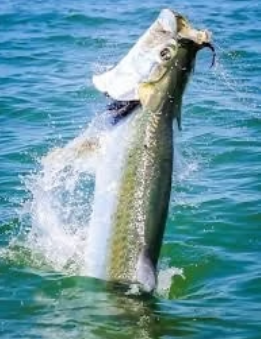
September 26, 2025
Introduction: Boca Grande, a renowned destination nestled along Florida's Gulf Coast, holds a special place in the hearts of anglers worldwide. Its pristine waters are teeming with abundant fish, but perhaps none are as revered as the mighty tarpon. Tarpon fishing in Boca Grande is not just a pastime; it's an exhilarating pursuit that tests the skill and determination of even the most seasoned anglers. The Tarpon: A Magnificent Game Fish: Known for their acrobatic leaps and formidable strength, tarpons are often referred to as the "silver kings" of the sea. These majestic creatures can grow to impressive sizes, with some specimens exceeding 200 pounds. What sets tarpon apart as a game fish is their size, resilience, and agility, making them a prized catch among anglers. The Boca Grande Experience: Boca Grande's unique geography and abundant baitfish population create the perfect conditions for tarpon fishing. The area is famous for its "tarpon season," which typically runs from April through July, attracting anglers from far and wide eager to test their skills against these powerful adversaries. Tips for Success: Timing is Key: Plan your trip during peak tarpon season for the best chance of success. Watch weather patterns and tidal movements, as they can greatly impact tarpon behavior. Tackle and Gear: Equip yourself with sturdy rods, reels, and lines capable of handling the strength of a tarpon. Consider using live bait such as mullet or crabs, as tarpon are known to be selective feeders. Location, Location, Location: Familiarize yourself with Boca Grande's hotspots, including the Boca Grande Pass, Gasparilla Sound, and nearby flats. Hiring a local guide can provide invaluable knowledge of these prime fishing areas. Patience and Persistence: Tarpon fishing requires patience and perseverance. Be prepared to spend hours on the water, waiting for the perfect moment to hook into one of these elusive giants. Preserving the Tradition: As with any form of angling, conservation is paramount to ensuring the sustainability of tarpon populations for future generations. Practice catch-and-release techniques, carefully handle tarpon, and adhere to local regulations to help protect this cherished species. Conclusion: Tarpon fishing in Boca Grande is more than just a sport; it's a way of life deeply ingrained in the culture of this coastal community. Whether you're a novice angler or a seasoned veteran, there's nothing quite like the thrill of battling a tarpon in these pristine waters. So grab your gear, head to Boca Grande, and prepare for an unforgettable angling adventure.
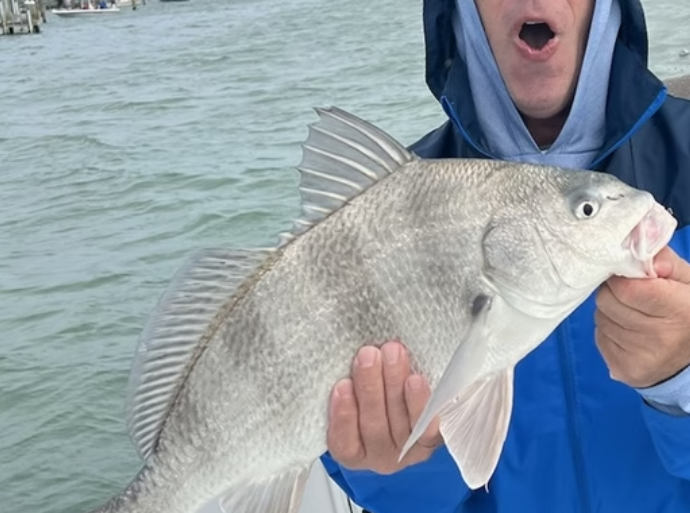
September 26, 2025
Fishing before and after a cold front can present different challenges and opportunities. Cold fronts often change atmospheric pressure, temperature, and weather conditions, affecting fish behavior. Here are some general tips for fishing before and after a cold front: Before a Cold Front: Increased Activity: Fish tend to be more active before a cold front arrives. Take advantage of this by using lures or baits that mimic the prey the fish are targeting. Change in Weather: Before the front, the weather is typically stable, and the barometric pressure is higher. Fish may be more willing to move and feed in these conditions. Shallow Water Fishing: Target shallow areas where fish may be feeding actively. As the cold front approaches, fish often move to shallower waters. Fast-moving Baits: Use fast-moving baits like crankbaits, spinners, or topwater lures to cover much water quickly and trigger reaction strikes. After a Cold Front: Adjust to the Drop in Temperature: Fish tend to be less active after a cold front passes, as the drop in temperature can temporarily slow their metabolism. You may need to fish more slowly and deliberately. Deeper Water Fishing: Fish often move to deeper water after a cold front. Use baits that target deeper areas, such as jigs, soft plastics, or drop-shot rigs. Lighter Line and Finesse Techniques: Consider using lighter fishing lines and finesse techniques to entice lethargic fish. They may be more reluctant to strike so that finesse presentations can be effective. Patience is Key: After a cold front, fish may take time to acclimate to the new conditions. Be patient, and experiment with different baits and techniques until you find what works. Fish Structure: Focus on fishing around structures, such as rocks, submerged trees, or drop-offs, where fish may seek refuge or find food. Use Natural Colors: In post-frontal conditions, fish can be more skittish. Consider using natural, subtle colors for your lures. Monitor Water Temperature: Keep an eye on water temperatures, as they can influence fish behavior. Warmer areas may still attract fish even after a cold front. Remember that fishing can be unpredictable, and local conditions can vary. Observing the water, adapting to the changing conditions, and experimenting with different techniques will increase your chances of success before and after a cold front.
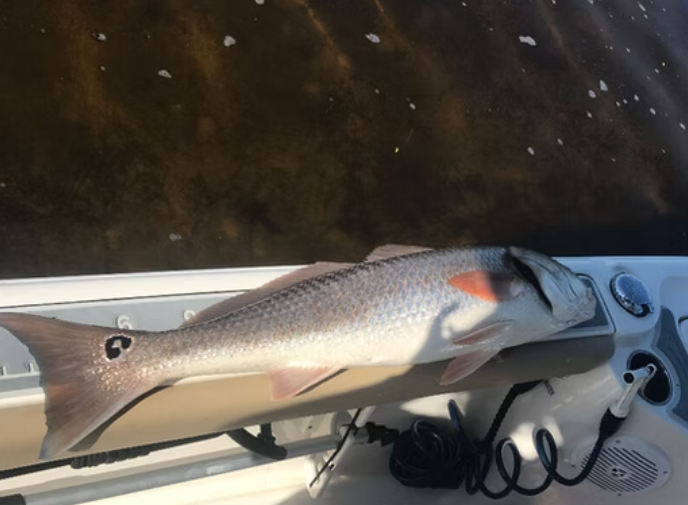
September 26, 2025
As the sun casts its warm glow over the tranquil waters of Pine Island Sound, anglers are gearing up for an unforgettable experience. The buzz around the fishing community is undeniable—redfish are making their grand entrance, and they're here in impressive numbers! From the southern shores of Sanibel Island to the northern reaches of Captiva Island, enthusiasts are enthusiastically reeling in these prized catches. Venturing into the heart of the action, I recently found myself amidst the excitement, exploring the Pineland area of Pine Island and the picturesque southern islands of Matlacha. What awaited me was nothing short of spectacular. The waters teemed with Redfish, their shimmering scales glistening under the sunlight, beckoning me to join in the chase. Armed with my trusty gear and anticipation, I set out to conquer these elusive beauties. And destroy them, I did! The thrill of the chase, the tug of the line, and the satisfaction of landing a prized upper-slot Redfish was an experience beyond compare. What's the secret to success, you might wonder? Well, it's all about the bait. In these bountiful waters, various baits have proven irresistible to the Redfish. Pins, whitebait, tread fins, and shrimp offer unique allure, drawing the Redfish in with tantalizing temptation. But the excitement doesn't end with the Redfish. Oh no, there's more to be had along the shores of Fort Myers and Cape Coral. Snook, those elusive predators of the mangroves, are out in force, providing anglers another thrilling challenge. And let me tell you, the bite is on! As the later afternoon high tides roll in, the action reaches a fever pitch, sending pulses racing and reels spinning. The rewards are plentiful for those fortunate enough to partake in this angler's paradise. Whether you're a seasoned pro or a novice angler, there's something magical about the thrill of the chase, the beauty of the catch, and the camaraderie shared amongst fellow enthusiasts. So, if you yearn for adventure and crave the thrill of the catch, look no further than Pine Island Sound. With Redfish abound and Snook aplenty, the possibilities are endless, and the memories'll last a lifetime.
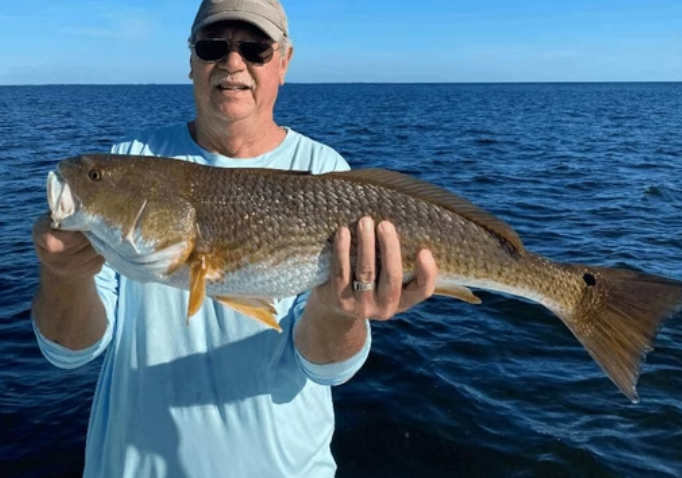
By Cam+ Klein
•
September 26, 2025
Nestled along the picturesque Gulf Coast of Florida, Sanibel Island is renowned for its stunning beaches, abundant wildlife, and world-class fishing opportunities. Sanibel Flats stands out as a haven for seasoned anglers and novices alike among the many angling hotspots that dot its coastline. In this blog post, we'll delve into the allure of fishing around Sanibel Flats, exploring its diverse marine ecosystem and the thrilling experiences it offers to fishing enthusiasts. The Beauty of Sanibel Flats: Sanibel Flats, a vast expanse of shallow water flats, mangrove islands, and winding channels, stretches along the southern shoreline of Sanibel Island and extends into the surrounding waters. This unique ecosystem is teeming with life, providing the perfect habitat for various fish species. The shallow depths of Sanibel Flats make it an ideal breeding ground and feeding area for many prized game fish, including tarpon, snook, redfish, trout, and permit. Abundant food sources such as shrimp, crabs, and small baitfish attract these species to the flats, creating an angler's paradise. Fishing Techniques: Fishing around Sanibel Flats offers anglers many techniques to target their desired species. One popular method is sight fishing, where anglers stand on the bow of a shallow-draft skiff or flats boat and visually spot fish cruising the clear waters. This requires stealth, patience, and precise casting to present baits or lures effectively to the targeted fish. Another effective technique is fly fishing, which has gained popularity among anglers seeking a more challenging and rewarding experience. The shallow depths and clear waters of Sanibel Flats provide the perfect conditions for fly anglers to stalk and tempt wary fish with meticulously tied flies. Light spinning or baitcasting gear paired with live bait or artificial lures can produce excellent results for those preferring conventional tackle. Drifting along the edges of the flats or casting into shallow sandy potholes often yields strikes from various species. Best Times to Fish: While fishing around Sanibel Flats is productive year-round, certain seasons offer optimal conditions for targeting specific species. For example, the summer months are prime time for pursuing tarpon as they migrate along the coast for food and warmer waters. Spring and fall are excellent seasons for targeting snook, redfish, and trout as they become more active in the shallows. Tides also play a crucial role in the success of fishing around Sanibel Flats. Many anglers prefer to fish during incoming or outgoing tides when water movement stirs up prey and triggers feeding behavior among game fish. Understanding the tides and their effect on fish movement is critical to maximizing your chances of success on the flats. Conservation and Responsible Fishing: As with any natural resource, responsible angling practices are essential to preserving the health and sustainability of the fishery around Sanibel Flats. Catch-and-release fishing is encouraged, especially for sensitive species like tarpon, snook, and redfish, to ensure their populations remain robust for future generations. Additionally, anglers should familiarize themselves with local fishing regulations and adhere to size and bag limits to help maintain a healthy balance within the ecosystem. Respect for the environment, wildlife, and fellow anglers is fundamental to ensuring the long-term viability of fishing around Sanibel Flats. Conclusion: Fishing around Sanibel Flats offers a captivating blend of natural beauty, thrilling angling opportunities, and the chance to connect with the rich marine heritage of the Gulf Coast. Whether you're a seasoned angler or a novice enthusiast, exploring these shallow waters will leave you with unforgettable memories and a deep appreciation for the wonders of the sea. So grab your tackle, set sail for Sanibel Island, and immerse yourself in the excitement of fishing around the legendary Sanibel Flats.
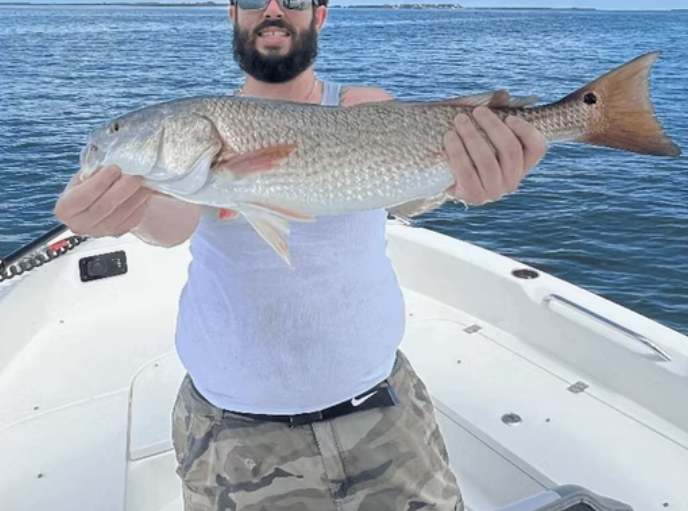
September 26, 2025
Bokeelia Island - Lee, FL Today, we caught redfish, Snook, Snappers, and Seatrout in Pine Island Sound from south Sanibel Island to the northern end of Captiva Island. I also managed some nice upper-slot Redfish in the Pineland area of Pine Island. Redfish today wanted pins. Snook are still plenty along the Fort Myers and Cape Coral shorelines and mangos.
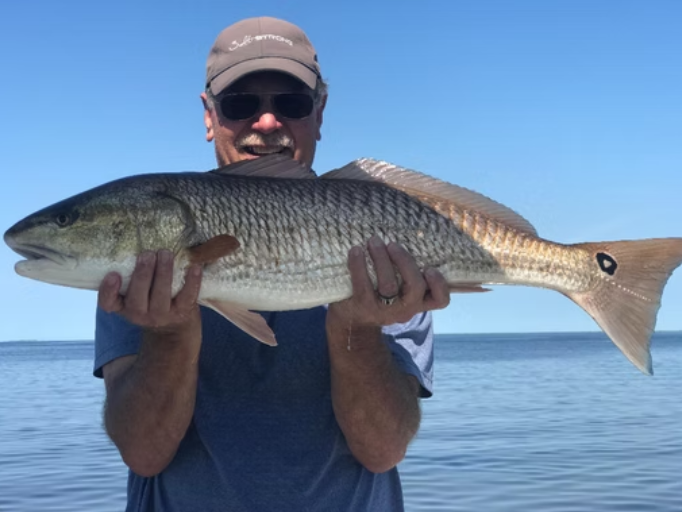
September 26, 2025
Sanibel Island - Lee, FL The rainy season starts to wind down, and cold fronts start to roll in, but water temperatures remain nice and warm for Redfish and Black Drum to make their comeback right in time for fall. I had a fantastic time with three amazing families last week, showing them what inshore fishing is all about. The weather was perfect, and the fish were hungry!
